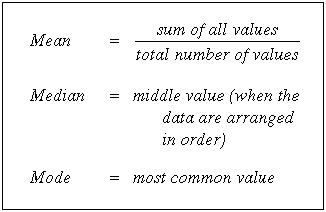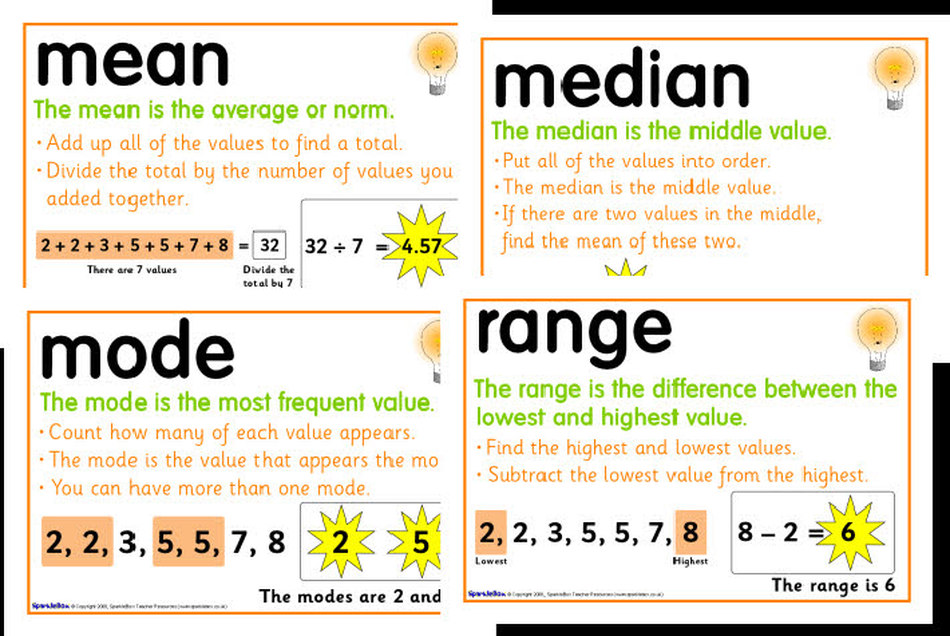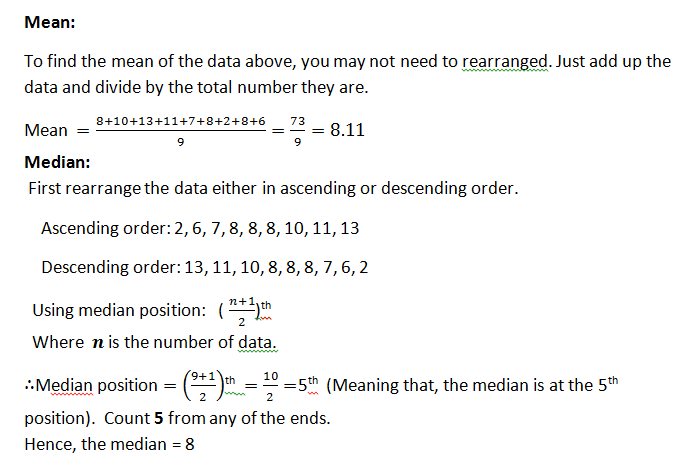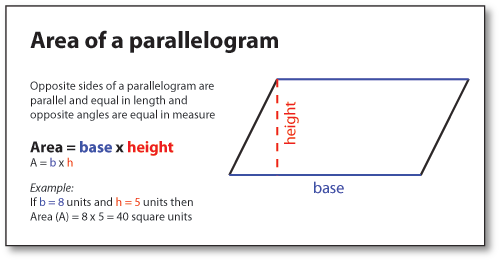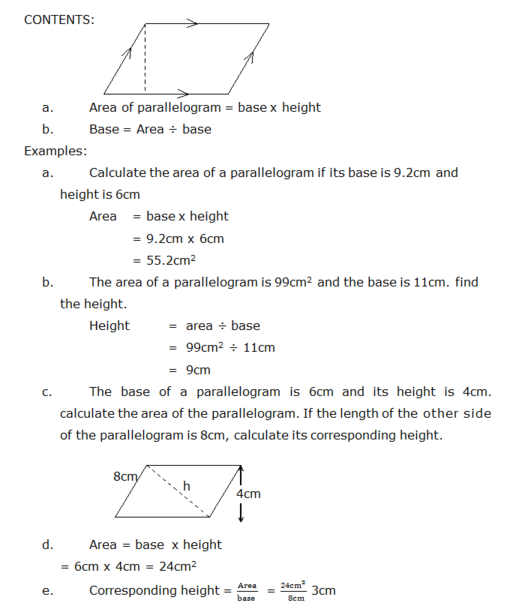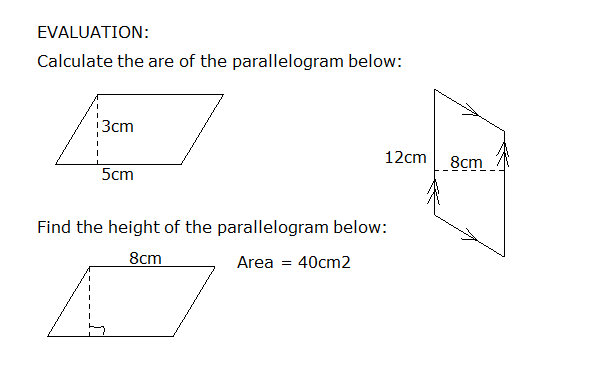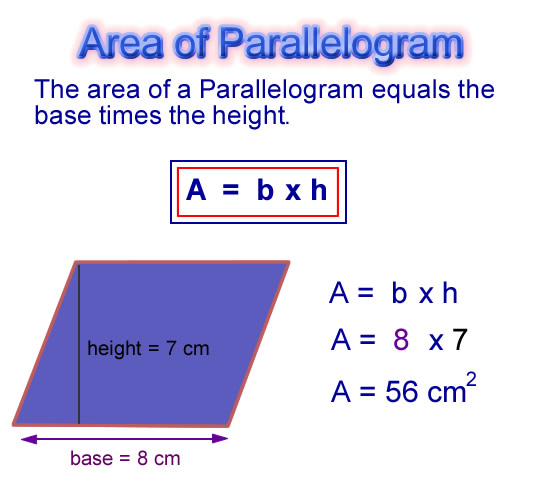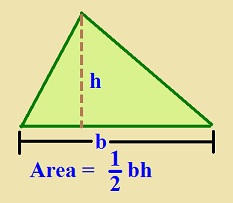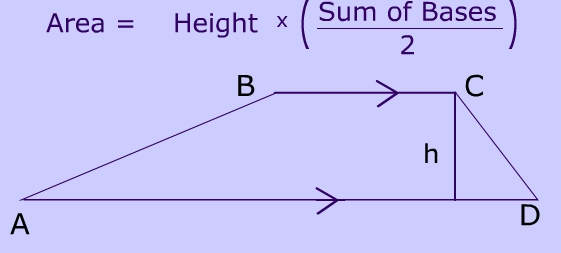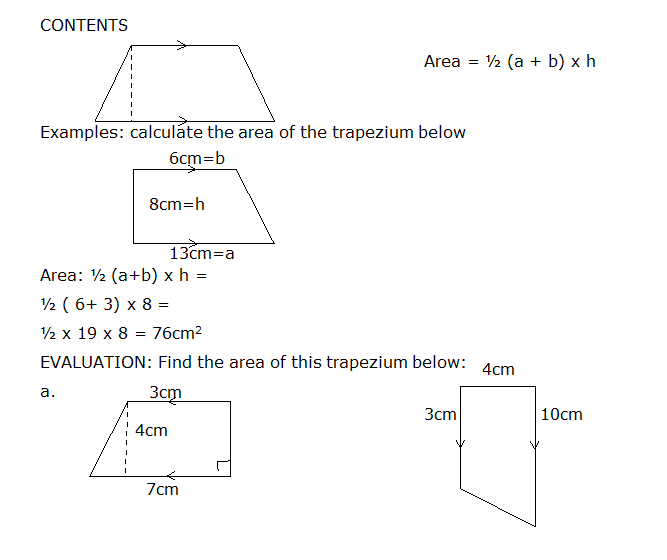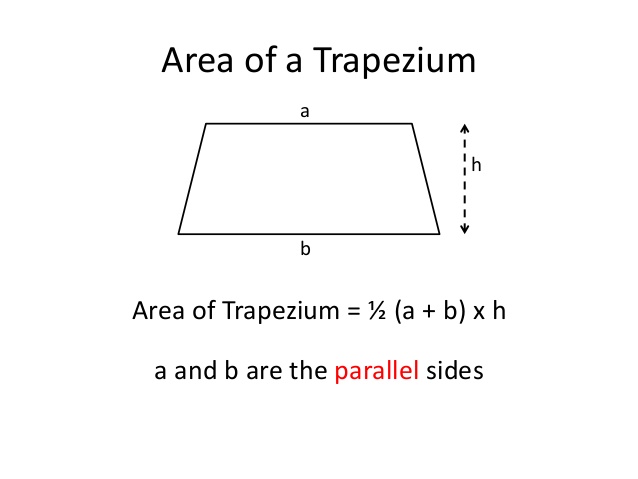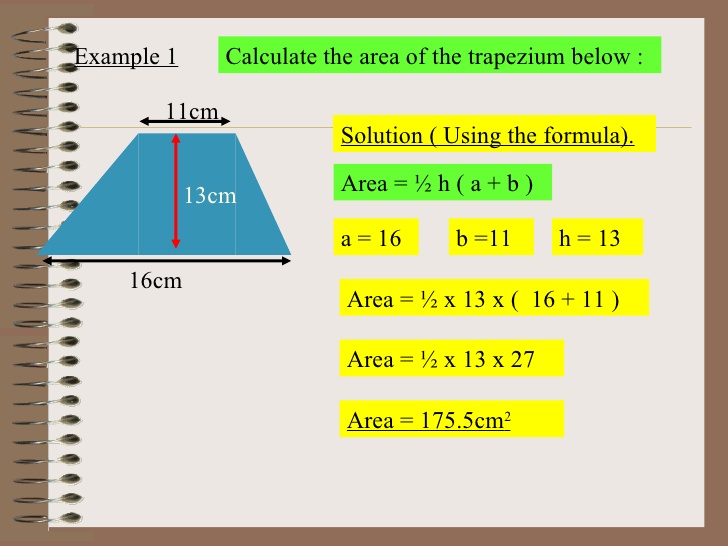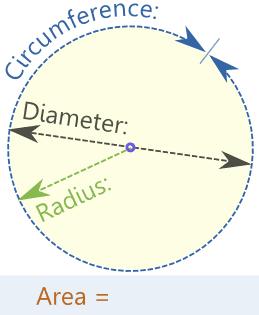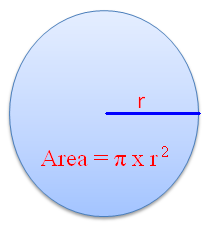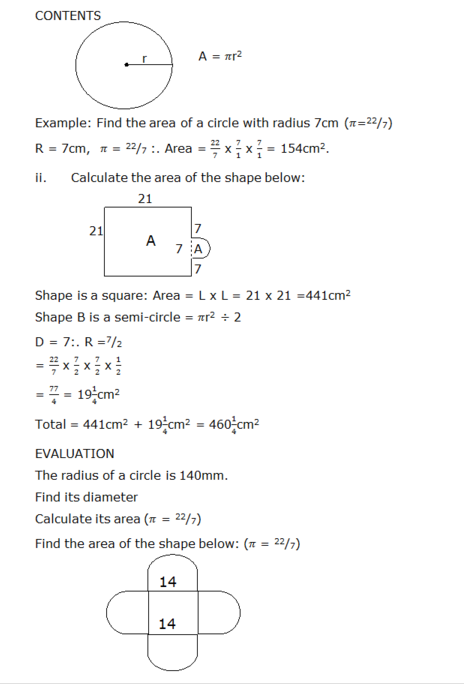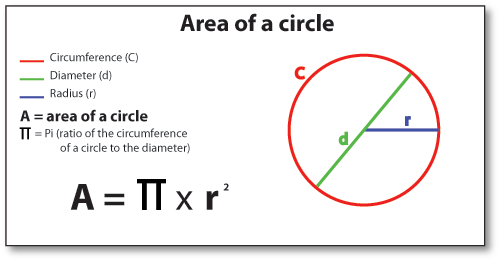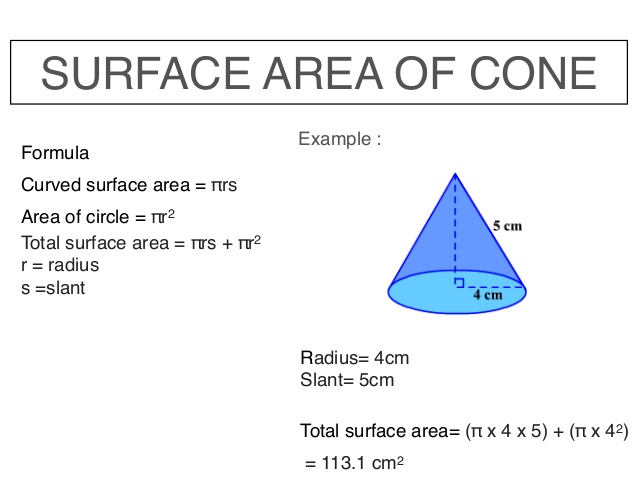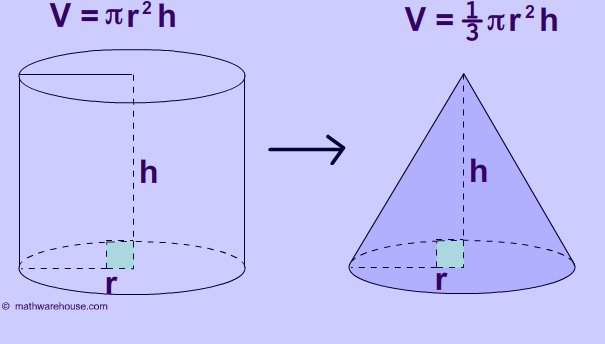TOPIC: DATA PRESENTATION
CONTENT:
Pie chart
Bar chart
Histogram
Pictogram
Bar line, etc
SUB TOPIC: REPRESENTATION OF INFORMATION ON PIE CHARTS.
A pie chart is a tool for data representation usually in the form of a circle and divided into sectors such that the angle at the centre is proportional to the frequency representing the item.
Example:
The table below shows the number of fruits sold in a day by a fruit seller.
Types of fruits... Number
Apples ...120
Bananas ...150
Mangoes ...120
Oranges ...150
Pawpaws ...50
Pineapples ...130
Illustrate the information on a pie chart.
Solution:

SUB TOPIC: REPRESENTATION OF INFORMATION ON BAR CHARTS.
A bar chart is a tool for data representation usually made up of rectangular bars of different height conveying the proportion of the frequencies of items being represented. They are simply blocks with equal spaces in between bars used to represent data.
Example:
The following records represent the number of different motor cycles (Okada) purchased in a year from one dealer:
Motor cycle No. of Purchases
Suzuki ...50,000
Honda ...80,000
Simba ...30,000
Jincheng ...35,000
Cargo ...17,000
Prepare a bar chart to illustrate the information. How many motor cycles were purchased?
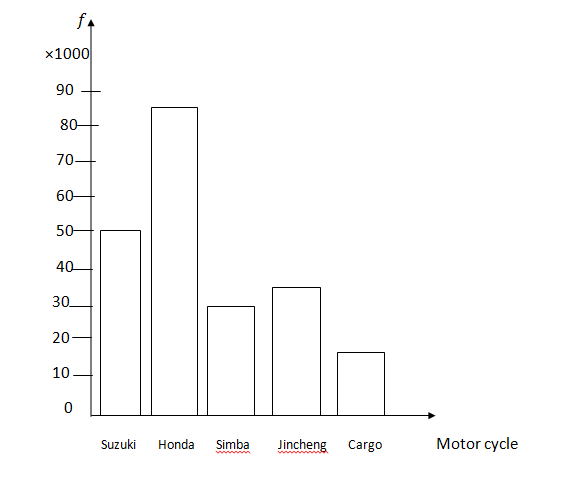
SUB TOPIC: REPRESENTATION OF INFORMATION ON HISTOGRAM.
A histogram is a tool for data representation usually made up of rectangular bars of different height conveying the proportion of the frequencies of items being represented without spaces in between bars.
Example:
The below table shows the number of students admitted in a University according to departments.
Departments ...No. of Students
Microbiology ...85
Physics ...25
Mathematics ...40
Chemistry ...15
Biochemistry ...20
Biology ...105
Illustrate the information on a histogram.
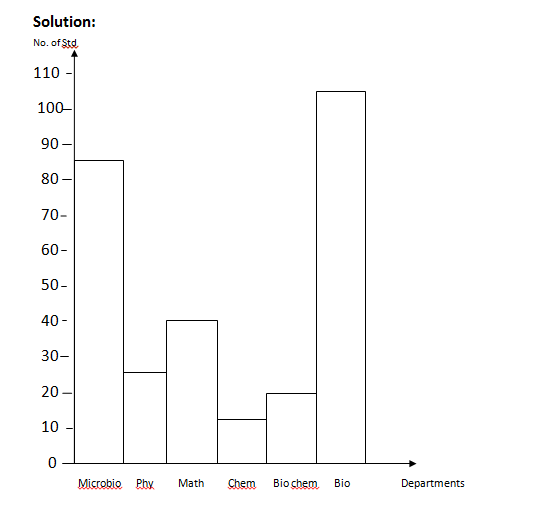
WEEKEND ASSIGNMENT:
Functional Mathematics for JSS Book3. Ex.13.2, pg 197 No. 3, 5,6,9,10
New General Mathematicss for JSS Book3 pg 153 No. 2-5
TOPIC: USE OF MEASURES OF CENTRAL TENDENCY
TO ANALYZE INFORMATION ON DRUG ABUSE.
The knowledge of measure of central tendency could help in analyzing the abuse of drugs among students as well as the youth. Specifically, it will help in:
i. finding out the most drug used;
ii. finding out the least drug used;
iii. finding out the rate of drug abuse among the youth
iv. finding out how drugs are used among the youth and in the society at large.
Examples:
1. The following data represent the frequencies at which some senior secondary students abuse drugs.
a). 33, 5, 8, 8, 10, 10, 10, 13, 15.
b). 4, 8, 9, 10, 13, 13, 15, 16, 16.
Find the mode for the drug abuse. What is its significant?
Solution:
a). The highest occurring score is 10. So, the mode for the first set of data is 10.
b). The second set of data is bimodal; i.e, it has two modes for drug abuse, 13 and 16.
The
The table below shows the rate at which some teenagers abuse drugs:
Name Ade Uche Adamu Bako Binta
Frequency 12 13 15 13 12

Find the mode for the drug abuse.
Solution:
Adamu consumes 15 times which is more than the rest of the people. So, Adamu is the mode for this set of data.
The following data shows the ages of some youths that take drugs:
23yrs, 19yrs, 18yrs, 30yrs
15yrs, 21yrs, 19yrs, 24yrs
25yrs, 31yrs, 17yrs, 20yrs
a). Find the median ages of the youths that take drugs.
b). Find the mean age of the youth.
Solution:
a). Rearrange in either ascending or descending order.
15yrs, 17yrs, 18yrs, 19yrs, 19yrs, 20yrs, 21yrs, 23yrs, 24yrs, 25yrs, 30yrs, 31yrs.
Counting from left or right, 20yrs and 21yrs are at the middle.
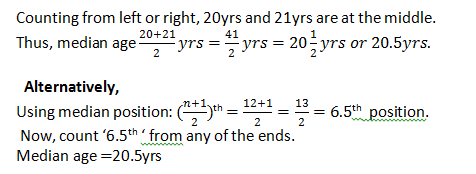
b). The mean age is the addition of all the ages divided by the number they are.
i.e, (15+17+18+19+19+20+21+23+24+25+30+31)/12 = 262/12 = 21.8yrs.
MEANING AND IMPORTANCE OF VOTING.
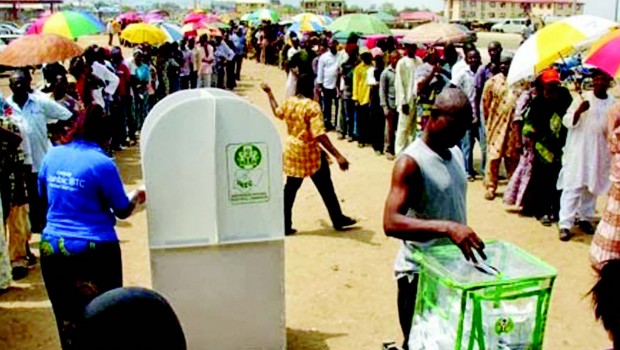
VOTING is a usually formal expression of opinion or will in response to a proposed decision; especially one given as an indication of approval or disapproval of a proposal, motion, or candidate for office. It is a fundamental right for every citizen of a country in a civilized and democratic nation.
THE IMPORTANCE OF VOTING AND COUNTING OF VOTES include:
i. It is a tool for selecting representatives in modern democracies.
ii. It teaches about one’s obligation as a citizen of a country to be voted for or to vote in order to elect a leader in a free and fair manner without fear or favour.
iii. It helps to detest favouritism, arrogance and tyrannism (act of using power over someone cruelly or unfairly).
iv. It helps to give room for true representation through the majority.
ANALYSIS OF VOTING USING MEASURES OF CENTRAL TENDENCY
We can analyse voting using the measures of central tendency, which are:
Mean
Median and
Mode.
Example:
The following figures represent the number of voters that voted from 2003 to 2008.
YEAR ....NO. OF VOTERS
2003 ....89,000
2004 ....101,000
2005 ....115,000
2006 ....131,000
2007 ....151,000
2008 ....96,000
a). What is the total number of voters?
b). Find the mean of the voters.
c). In what year did the people vote most?
d). In what year did the people vote least?
e). How many people voted in years 2003 and 2004?
Solution:
a). Total number of voters =(89000+101000+115000+131000+151000+96000)=683000.
b). Mean = [sup]683000[/sup]/[sub]6[/sub] = 114000 voters.
c). Year 2007
d). Year 2003.
e). Number of voters in 2003 and 2004=89000+101000=190000 voters.
EVALUTION:
The total votes cast at different centres are as follows:
5000, 7000, 9000, 10000, 12000, 17000, 18000, 15000, 9000, 18000.
Find a. the mean of the votes cast.
b. the median of the votes cast.
c. the mode of the votes cast.
ASSIGNMENT:
Functional Mathematics for JSS Book3: Ex.12.3, pg 192 No. 3-6.
Functional Mathematics for JSS Book3: pg 186 – 213.
